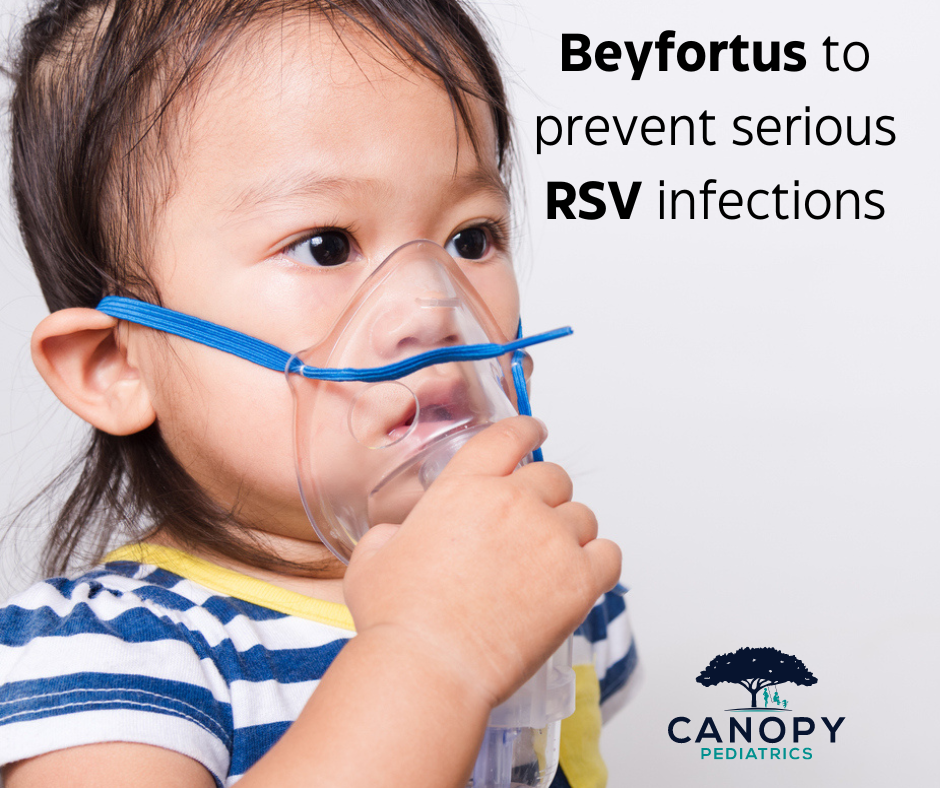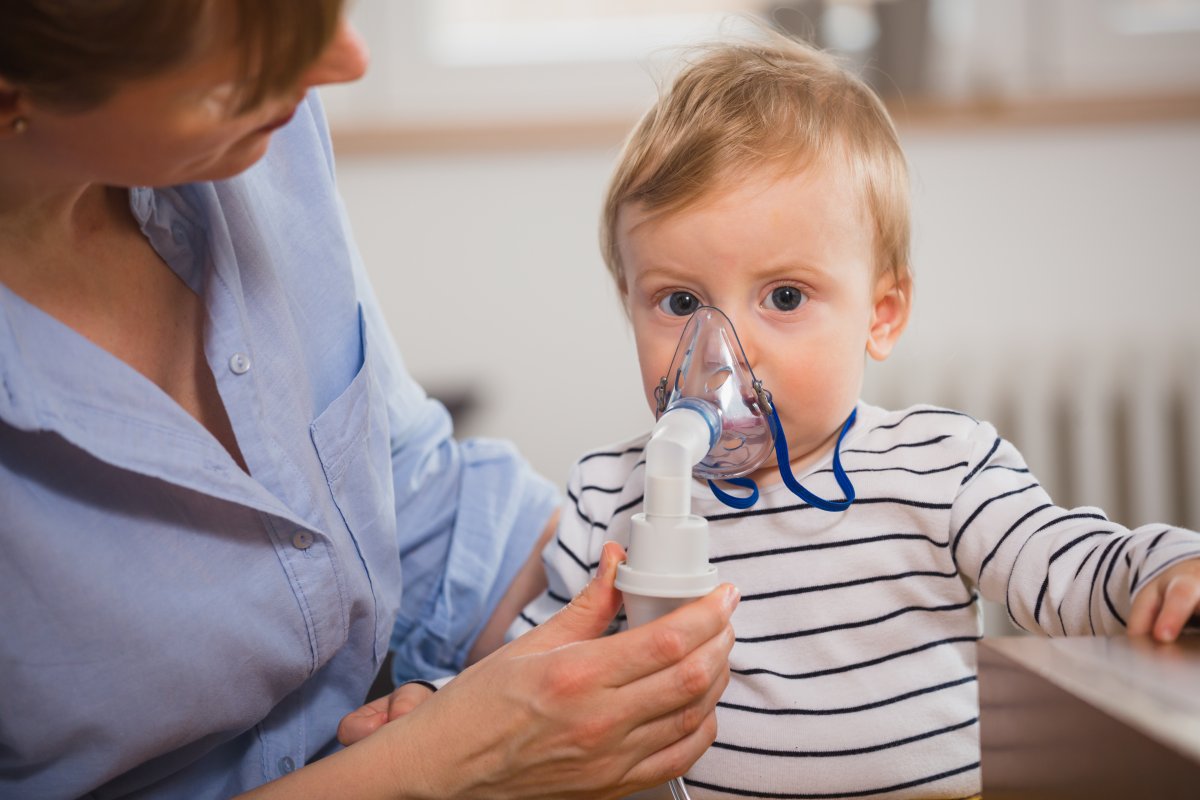Beyfortus (nirsevimab), developed by Sanofi and AstraZeneca, is a monoclonal antibody (see next paragraph) designed to protect infants from respiratory syncytial virus (RSV). Approved in July of 2023, it is recommended for infants who are less than 8 months-of-age during the RSV season, and it is given right around the start of RSV season.
In our area, RSV season starts in October and runs through April. The first large post-release study in Spain (published August of 2024) showed that Beyfortus is highly effective, reducing hospitalizations due to RSV-related lower respiratory tract infections (LRTI) by 82%! It has proven safety, with no significant adverse events reported in real-world conditions. In placebo-controlled trials, the patients in the placebo group and the Beyfortus had the same amount of adverse events.
A monoclonal antibody is a lab-made protein designed to mimic the immune system’s ability to fight infections. It’s “monoclonal” because it comes from a single type of immune cell, meaning it’s highly specific in targeting a single substance, like a virus, in this case, the RSV virus. By binding to the virus, they block its ability to spread, offering protection to those who might not have developed strong immunity naturally, like infants.
Synagis (Palivizumab) is the “original” RSV monoclonal antibody. It was released in 1998, and we still use it, but it is very expensive and only lasts one month. Since it only lasts one month, babies have get the shot every month for the entirety of RSV season. For this reason, Synagis has only been used for high risk babies (such as babies who are premature or have lung or heart issues).
To schedule your child’s RSV shot, log into your patient portal and select a “nurse or vaccine appointment.” Christi Arrington, RN will be administering shots from 8:45 am to 1:45pm, and Hannah Frost, RN will be administered shots in the late afternoon.

